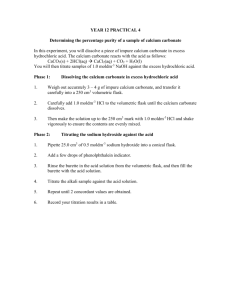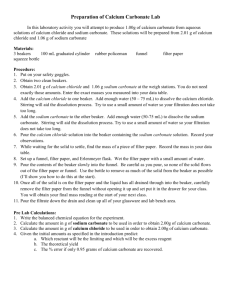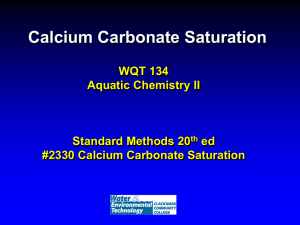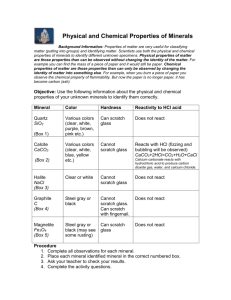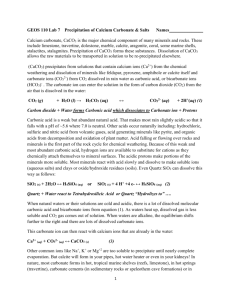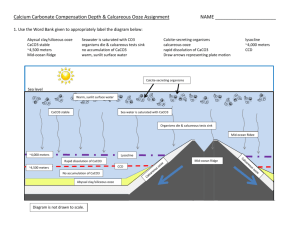The potential of upper ocean alkalinity controls for atmospheric
advertisement
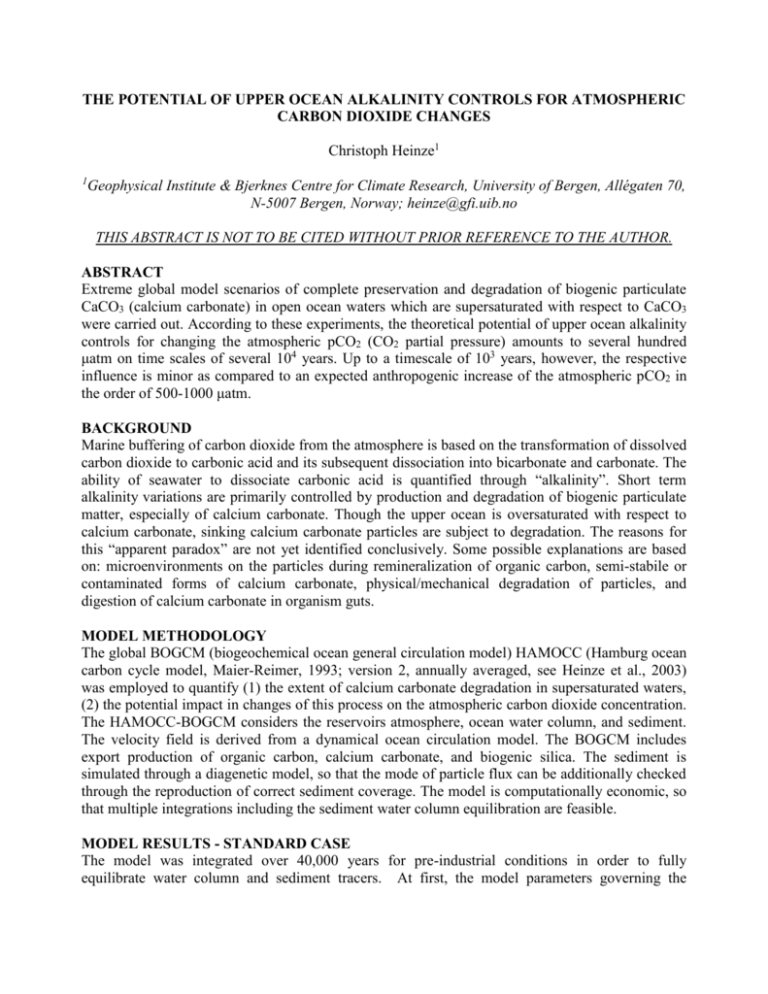
THE POTENTIAL OF UPPER OCEAN ALKALINITY CONTROLS FOR ATMOSPHERIC CARBON DIOXIDE CHANGES Christoph Heinze1 1 Geophysical Institute & Bjerknes Centre for Climate Research, University of Bergen, Allégaten 70, N-5007 Bergen, Norway; heinze@gfi.uib.no THIS ABSTRACT IS NOT TO BE CITED WITHOUT PRIOR REFERENCE TO THE AUTHOR. ABSTRACT Extreme global model scenarios of complete preservation and degradation of biogenic particulate CaCO3 (calcium carbonate) in open ocean waters which are supersaturated with respect to CaCO3 were carried out. According to these experiments, the theoretical potential of upper ocean alkalinity controls for changing the atmospheric pCO2 (CO2 partial pressure) amounts to several hundred μatm on time scales of several 104 years. Up to a timescale of 103 years, however, the respective influence is minor as compared to an expected anthropogenic increase of the atmospheric pCO2 in the order of 500-1000 μatm. BACKGROUND Marine buffering of carbon dioxide from the atmosphere is based on the transformation of dissolved carbon dioxide to carbonic acid and its subsequent dissociation into bicarbonate and carbonate. The ability of seawater to dissociate carbonic acid is quantified through “alkalinity”. Short term alkalinity variations are primarily controlled by production and degradation of biogenic particulate matter, especially of calcium carbonate. Though the upper ocean is oversaturated with respect to calcium carbonate, sinking calcium carbonate particles are subject to degradation. The reasons for this “apparent paradox” are not yet identified conclusively. Some possible explanations are based on: microenvironments on the particles during remineralization of organic carbon, semi-stabile or contaminated forms of calcium carbonate, physical/mechanical degradation of particles, and digestion of calcium carbonate in organism guts. MODEL METHODOLOGY The global BOGCM (biogeochemical ocean general circulation model) HAMOCC (Hamburg ocean carbon cycle model, Maier-Reimer, 1993; version 2, annually averaged, see Heinze et al., 2003) was employed to quantify (1) the extent of calcium carbonate degradation in supersaturated waters, (2) the potential impact in changes of this process on the atmospheric carbon dioxide concentration. The HAMOCC-BOGCM considers the reservoirs atmosphere, ocean water column, and sediment. The velocity field is derived from a dynamical ocean circulation model. The BOGCM includes export production of organic carbon, calcium carbonate, and biogenic silica. The sediment is simulated through a diagenetic model, so that the mode of particle flux can be additionally checked through the reproduction of correct sediment coverage. The model is computationally economic, so that multiple integrations including the sediment water column equilibration are feasible. MODEL RESULTS - STANDARD CASE The model was integrated over 40,000 years for pre-industrial conditions in order to fully equilibrate water column and sediment tracers. At first, the model parameters governing the calcium carbonate degradation in the water column were adjusted so that the simulated carbonate ion distribution approximately reproduces the observations. The resulting integrated calcium carbonate degradation rate in the upper ocean was diagnosed and amounts to 65% of the modeled CaCO3 export production. This value compares well with evidence based on observations (Milliman et al., 1999). The atmospheric pCO2 in the standard run is 282.6 μatm. MODEL RESULTS – PERTURBED CASES Then the model ocean system was perturbed for cases of (a) strongly enhanced calcium degradation in the water column and (b) complete preservation of calcium carbonate in supersaturated waters. In case (a) the CaCO3 re-dissolution rate constant was increased by a factor of 100% so that nearly all biogenic calcareous material was re-dissolved almost immediately. In case (b) no CaCO3 degradation was allowed at grid cells were formal CaCO3 super-saturation had been diagnosed in the control run. The results are summarized in Table 1. CONCLUSION Independently from any changes in CaCO3 production due to ecological or environmental changes a drastic change in upper ocean CaCO3 re-dissolution in open ocean areas is of only minor quantitative importance as compared to a doubling or quadrupling of the atmospheric pCO2 due to additional greenhouse gas emissions within the next 100-1000 years. REFERENCES Heinze, C., A. Hupe, E. Maier-Reimer, N. Dittert, and O. Ragueneau (2003) Sensitivity of the marine biospheric Si cycle for biogeochemical parameter variations, Global Biogeochemical Cycles, 17(3), 1086, doi:10.1029/2002GB001943. Maier-Reimer, E. (1993) Geochemical cycles in an ocean general circulation model. Preindustrial tracer distributions, Global Biogeochemical Cycles, 7, 645-677. Milliman, J.D., P.J. Troy, W.M. Balch, A.K. Adams, Y.-H. Li, F.T. Mackenzie (1999) Biologically mediated dissolution of calcium carbonate above the chemical lysocline ? Deep-Sea Research I, 46, 1653-1669. Table 1. Results for atmospheric CO2 partial pressure for the standard and sensitivity runs. Run pCO2 after pCO2 after pCO2 after pCO2 after 100 years 1000 years 10000 years 40000 years [μatm] [μatm] [μatm] [μatm] standard 282.6 (quasi-equilibrium) complete 265.4 243.7 197.0 122.9 degradation complete 287.2 321.7 463.2 590.5 preservation ACKNOWLEDGEMENT This work was in part supported through contract 511176-2 (CARBOOCEAN Integrated Project) by the European Commission.
